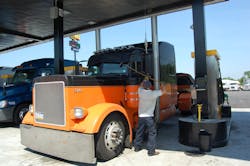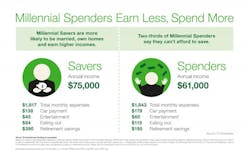It’s National Truck Driver Appreciation Week and my colleague Kevin Jones offers up some great insight on how to treat drivers in his most recent blog post.
The thing is though, despite a variety of efforts being deployed by motor carriers, finding and keeping truck drivers is becoming more and more difficult for a variety of reasons.
(And that applies to other positions within the trucking industry as well).
And, as usual, when the talk turns to truck driver recruiting and retention efforts, it inevitably settles on the issue of driver pay and all the many questions that simple two-word term engenders:
- Are truck drivers being paid enough?
- If they are not, what amount of pay will keep them behind the wheel?
- Will pay trump other factors, such as home time?
One would think this is a relatively cut-and-dried subject, too; you pay a wage that attracts and keeps workers, usually based on regional particulars.
Yet it’s not – far from it, actually.
First, there are many different types of truck driving jobs – long haul, regional, pickup and delivery, and so on – and that’s making the creation of pay scales more complex to a degree.
Second, some industry experts believe higher pay alone won’t solve the driver shortage issue. And there’s some truth to that, based on recent research by consulting firm Stay Metrics.In a conference call last week, the firm noted a surprising finding from its ongoing surveys of truck drivers that roll through the 80 motor carriers it works with: Drivers satisfied with their pay are actually somewhat more likely to quit early (yes, you read that right) at the three month point compared to those that are not satisfied with their pay, by a rate of 55.8% to 44.2%, though the firm believes this effect isn’t significant.
Longer term, however, drivers satisfied with their pay are less likely to quit later on at the one-year mark than those who are not (63.3% versus 36.7%).
By contrast, home time and work-family conflict are much higher predictors of turnover, according to Stay Metrics. At the three month mark, drivers dissatisfied with home time are 93.4% more likely to leave versus the 6.6% who are satisfied. That shifts a bit to 83.6% versus 16.4% when drivers reach the one-year mark.
The work-family conflict issue shows a similar distribution: at the three-month mark, 60.2% leave due to such conflicts versus 39.8% of those who don’t, which stays pretty steady at 61.8% versus 38.2% if they reach the one-year mark.
Yet despite all of that, I can’t shake a comment made by Mike Khron, vice president of operations for PGT Trucking, at the 2016 ALK Technology Summit back in May: “Pay is the biggest area motor carriers gloss over today,” he said. “Pay is considerably more important to drivers than we give them credit for; I think carriers miss the boat about it.”
Khron added that the current level of national unemployment level of 5% means workers have “many more options” than driving a truck. “And [diver] pay has not gone up with inflation, let alone in comparison to other occupations,” he stressed.OK, then: but how much is enough to attract and retain trucks drivers? Is there a generational component to pay?
Maybe there is, if the TD Ameritrade Millennials and Money Survey is any guide.
That survey found that the minimum personal income required to be “happy” is $58,000 for Baby Boomers and $51,000 for Millennials. Interestingly, those “minimums” change rather drastically for Millennials depending on whether they are “savers” or “spenders,” as the chart above shows.
TD Ameritrade also found that “savers” – both Millennials and Baby Boomers – find saving makes them happy (67% and 71% respectively) with most (8 out of 10) equating “saving” with security.
“Our research shows that it isn’t so much having more money as it is saving money that can make people feel more financially secure and happy,” noted Dara Luber, a retirement and long-term investing professional at TD Ameritrade, in the study. “The more money you have saved, the freer you are to take control of your own destiny and make choices to improve your quality of life.”
That brings me back to an argument I offered up in this space earlier this year: can offering “financial security” help trucking companies attract and retain drivers, among other position, especially among the Millennial generation?
Maybe it’s worth exploring in some form or another, if only because the job of driving trucks for a living is getting no easier.


